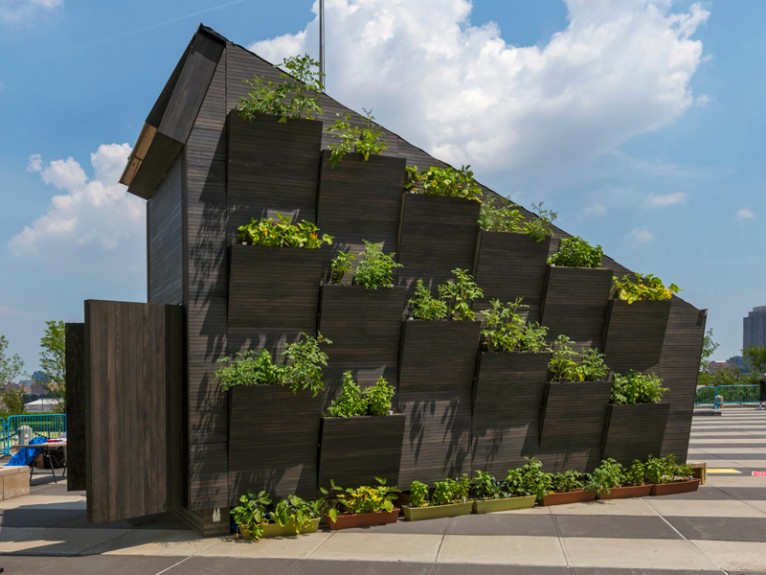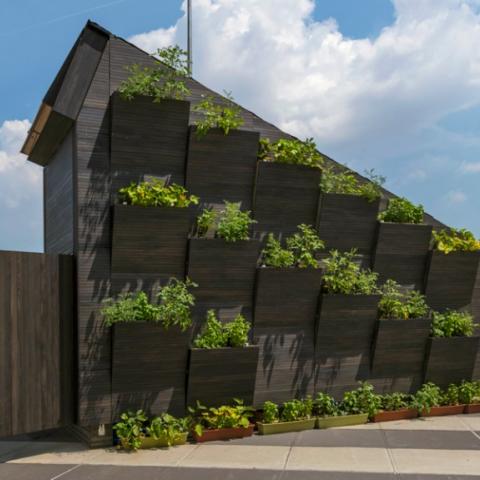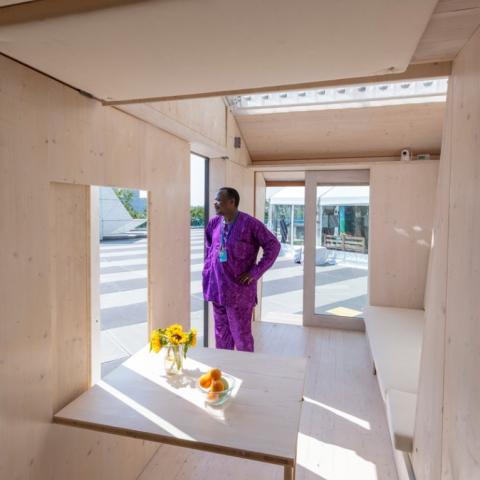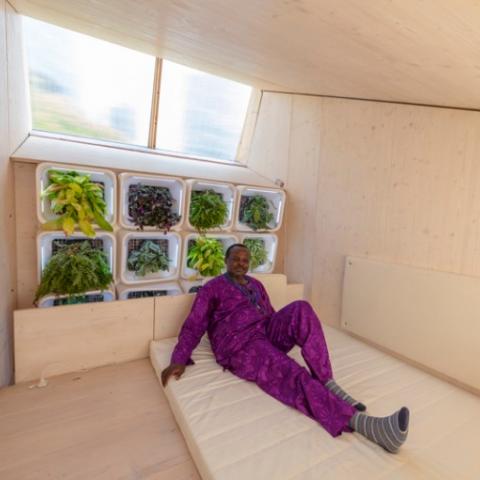How to make modern living sustainable with new eco-housing module
UN Environment and Yale University - Center for Ecosystems in Architecture in collaboration with UN Habitat unveiled a new eco-housing module, to spark public discussion and new ideas on how sustainable design can provide decent, affordable housing while limiting the overuse of natural resources and climate change.
The 22-square-meter “tiny house” is fully powered by renewable energy and designed to test the potential for minimizing the use of natural resources such as water.
The Ecological Living Module – unveiled during the United Nations High-level Political Forum on Sustainable Development – is constructed primarily from locally-sourced, bio-based renewable materials.
UN Environment’s collaborator, the Yale Center for Ecosystems in Architecture, worked with Gray Organschi Architecture to design, fabricate and install the Ecological Living Module. The unit is efficient and multi-functional, accommodating up to four people, serving both domestic and commercial purposes.

Around one billion people worldwide currently live in informal settlements, while millions more live in buildings that are not environmentally friendly. Rapid urbanization and economic growth challenge communities to sustainably expand capacity, heightening the need for innovation in building systems and infrastructure.
“Architecture must address the global housing challenge by integrating critically needed scientific and technical advances in energy, water, and material systems while remaining sensitive to the cultural and aesthetic aspirations of different regions,” said Deborah Berke, Dean of the Yale School of Architecture.
The first demonstration unit, located in the UN Plaza in New York City, from July 9-18, contains features relevant to the local climate and context of New York. Future iterations of the module – including one in Kenya, the home of UN Environment – will respond specifically to local climatic and cultural contexts.





